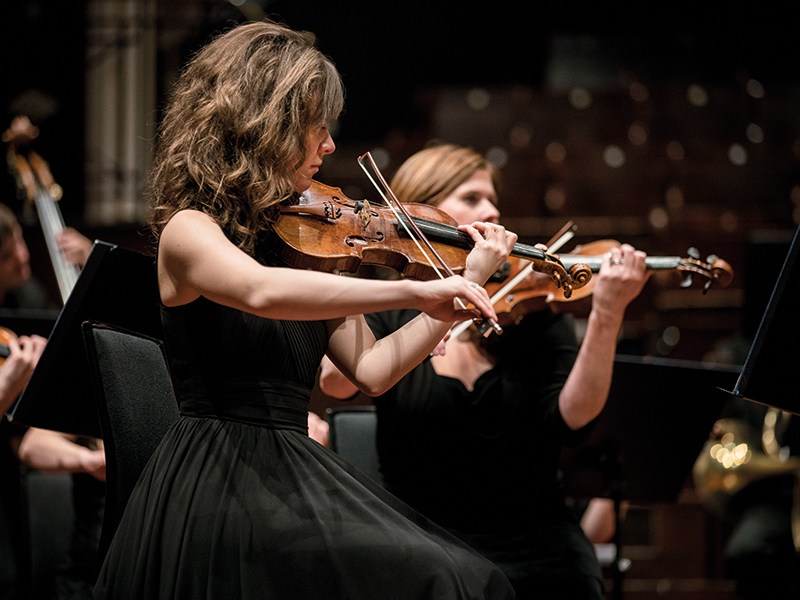This Sunday evening at the Lammermuir Festival takes us to another impressive East Lothian church, the Dunbar Parish Church. This grand red stone church, built in 1821, stands proudly looking out to sea. Inside it offers a big performance stage for a 36 strong SCO, but as there are quite a number of regulars missing and several older musicians playing this doesn’t seem to be the normal SCO line up. There is also a last minute replacement conductor as the scheduled conductor Daniel Blendulf has been taken ill. Moritz Gnann steps in to deputise.
The concert begins with a very lively performance of Haydn’s Symphony No 44 in E Minor known as the ‘Trauer’ or Mourning Symphony. This was because Haydn reportedly had asked for its lovely slow movement at his funeral. However, there is no sign of mournfulness in the lively opening movement or in the powerful closing movement. Despite a relatively quiet and reflective minuet and Adagio this must be amongst the most cheerful mourning pieces written, and provides a perfect opening work.
This is followed by Danish composer Carl Nielsen’s Flute Concerto, written in 1926, a wonderful melodic work which
demonstrates Nielsen’s famous dictum ‘music is life and like it inextinguishable!’ Nielsen wrote the concerto for a young Danish flautist and wanted it to reflect his gentle nature but also his humour and the work succeeds in doing that, often the flute replying to the rather discordant bass trombone. It is perfectly played by Adam Walker, a rising star of the flute, who was appointed principal flute of the LSO when he was only 21!
After the interval, Adam Walker plays Australian composer Brett Dean’s Siduri Dances which he gave the world premiere of in 2011. This rather wild and demonic work contrasts vividly with the Nielsen concerto heard earlier. In particular, there is very little melody in Brett Dean’s work. Even the skill of Adam Walker does not convince us of the merits of the piece.
Fortunately the concert ends with Mozart’s Symphony No. 36, known as ‘The Linz’, which he wrote for Count Thun of Linz, one of his patrons. Mozart reportedly wrote the symphony in a few days, yet it is one of his most sparkling works and
displays his orchestral genius at its highest level. The packed audience step out into a lovely evening in Dunbar in a good mood convinced that musical genius and melody will stand the test of time.
